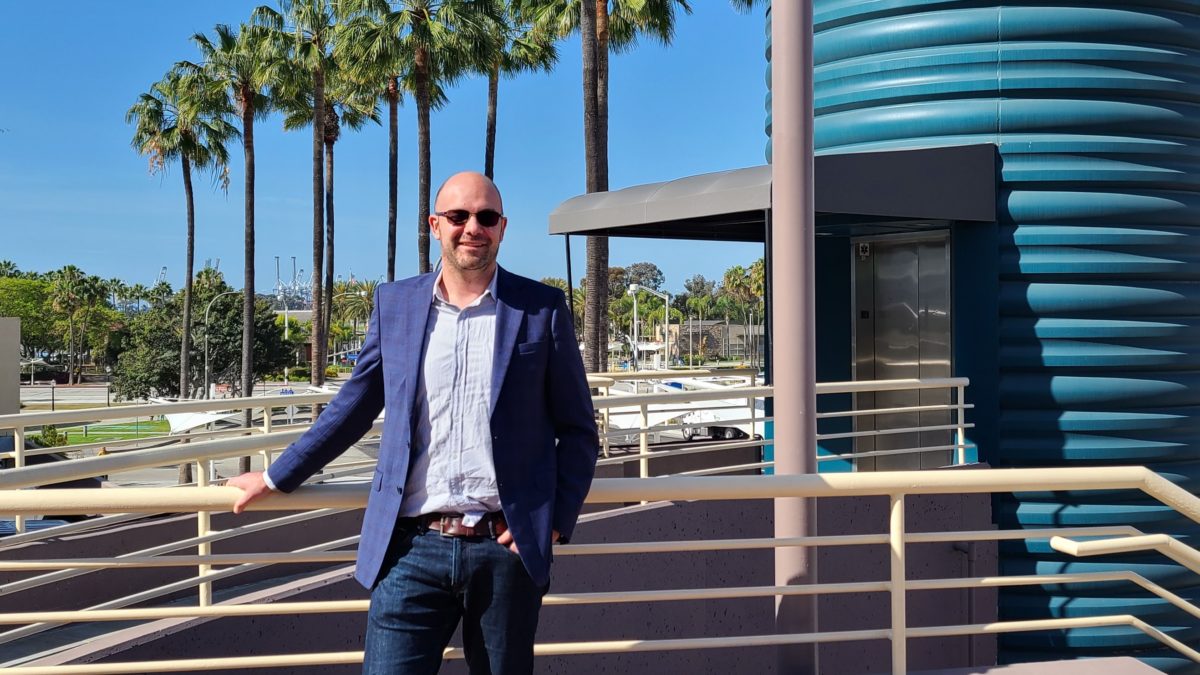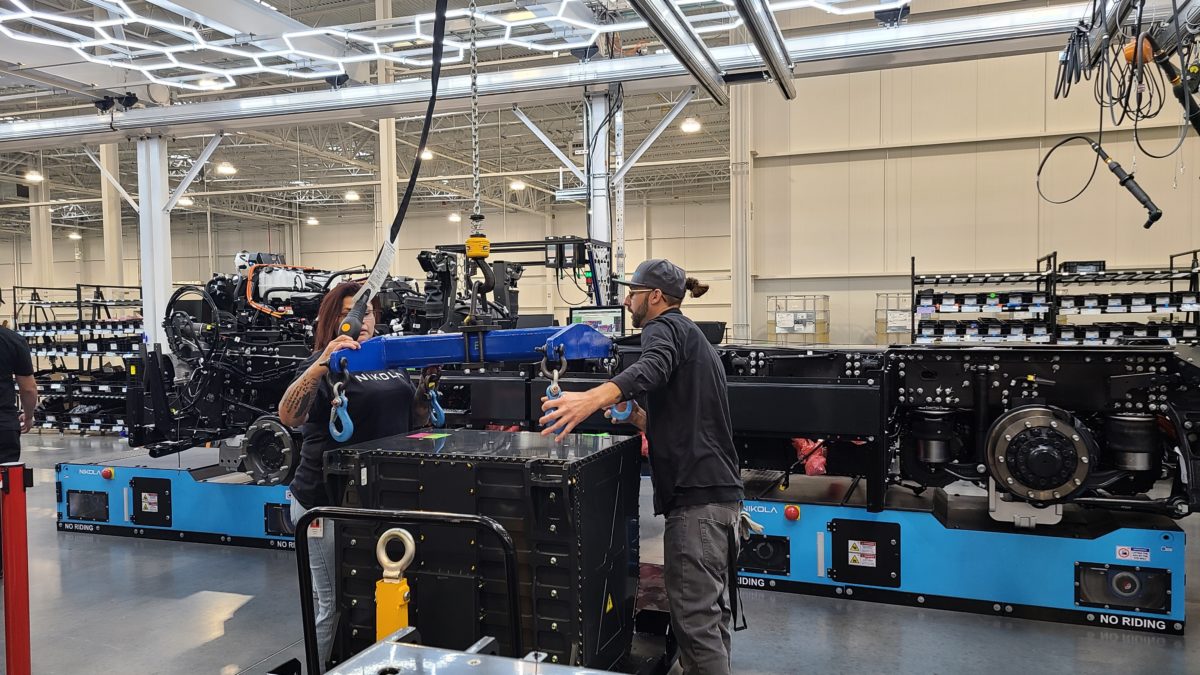TruckWings, the aerodynamic tractor-trailer gap-closing hardware, has surpassed 500 million miles of real-world use. TruckLabs founder Daniel Burrows figures someone will buy his 8-year-old company — someday.
The aerodynamic flight of TruckWings
Trucking technology claims tied to the number of miles driven is a common proof point of effectiveness. When that number is 500 million miles, it’s hard to miss. TruckLabs, the inventor of TruckWings gap-closing hardware for tractor-trailers, has surpassed the half-billion-mile mark on five of the largest fleets, including UPS, Ryder and, most recently, Amazon.
TruckWings are motorized panels that deploy at highway speeds to close the gap between tractor and trailer. That causes airspeed to drop, reducing downstream turbulence. An increase in back-of-cab pressure reduces overall drag on the tractor-trailer, especially in high crosswinds.

But if they are so great — TruckWings purportedly improve fuel economy by 3% to 6% and pay for themselves in less than two years — why hasn’t someone swooped in to buy the company Daniel Burrows founded as XStream Trucking out of Stanford University in 2014.
“We’ve got great backers. We’ve raised $25 million in the private markets and from venture investors,” Burrows told me. “I’m assuming that the value the team is creating will find a home, whether it’s the public markets or an acquisition at some point.”
He doesn’t seem to be in a hurry for that to happen.
“We’re generating revenue in gross margin. So we’re trying to finance the company through good old-fashioned selling things.”
Twin goals: TCO and reducing emissions
TruckLabs focuses on sustainable emissions reductions and reducing total cost of ownership — a primary goal of purchasing managers. Cutting fuel consumption accomplishes both.
“I wanted to build products that saved money but also step-changed [fleet] missions,” Burrows said. “When we first went to market, people were really only interested in saving money. We hardly talked about carbon savings. Fast forward to 2022. People almost only want to talk about carbon savings. The total cost of ownership needs to be there.”

TruckLabs claims the half-billion miles of air-sweeping aerodynamics has saved 32,648 metric tons of planet-warming carbon dioxide emissions — the equivalent of removing a year’s worth of emissions from 7,000 cars.
Volvo pre-wires for TruckWings
Volvo Trucks North America pre-wires for TruckWings, making post-assembly installation easy at modification centers. Thousands of TruckWings are on the road, many in natural gas-powered rigs. That was sort of a quirk. Natural gas trucks have horizontal exhausts. Older diesels have smog-spewing vertical pipes. The cleaner-burning current diesels have horizontal exhausts.
Mike Roeth, executive director of the North American Council for Freight Efficiency (NACFE), said the fuel economy savings from TruckWings offsets the lower miles per gallon of natural gas compared to hotter-burning diesel.
“He called me early on in his development,” Roeth said of Burrows. “I remember telling him that closing the gap between tractor and trailer was a big opportunity but very difficult to do, and that people had tried before.”
Daycabs are the sweet spot for TruckWings
TruckWings are most valuable on daycabs where short highway runs expose the significant gap between the cab and the trailer. Roeth worried the variety of trailers hooked to daycabs would impact durability and reliability. But Truck Wings held up fine.
NACFE underestimated the prevalence of side winds.
“The bigger the gap, the more fuel savings from the device,” Roeth said. “Daycab and regional haul customers have a lot more value.”
He and his team at NACFE study all manner of fuel-saving technologies. It might be an understatement to call Roeth a fan of TruckWings.
“Of all the things I’ve ever worked on, this one has met or exceeded exceptions,” he said. “It’s a big risk, big reward, and the guy pulled it off. Kudos to him.”
Future prospects
TruckWings could be a boon to battery-powered electric trucks, improving fuel efficiency by 5.5%.
“When you say, ‘Hey, you can get 5% [more] range … 5% more battery capacity on an electric truck for a few thousand dollars, it’s a no brainer,” Burrows said.
The Gen 3 platform incorporates lessons learned, such as diesel exhaust orientation. Truck Wings are easier to maintain, fully autonomous, and track and report averted carbon emissions, he said.
The Supporting Trucking Efficiency and Emission Reductions (STEER) Act is gaining co-sponsors in Congress. It would authorize $100 million annually from 2022-2026 for vouchers to help pay for retrofitting heavy-duty trucks with currently available emission-reducing technology — like TruckWings.
TruckLabs isn’t resting on its laurels from TruckWings. A telematic stack connected to the cloud collects truck data that controls safe opening and closing of the Truck Wings. It also reports uptime to validate return on investment.
A second product called TripDynamics leverages the data collection as well. It helps drivers with route planning and avoiding severe weather patterns, and it suggests the best time to start a route and how fast they should drive.
Nikola completes Romeo acquisition
Nikola Corp. now has a battery subsidiary. The electric truck startup needed overtime, but it completed the all-stock acquisition of Romeo Power on Wednesday, getting tenders of about 93.2 million Romeo shares, equivalent to the minimum 50.1% required.
Nikola will cancel shares that didn’t vote but still pay the offer price. The deal valued at $144 million ended up being worth a lot less because of the hammering of equities in the weeks since the announcement. Nikola shares closed Thursday at $3.10, about half of where they were on the day of the agreement.
The share swap was based on where Nikola and Romeo shares traded on July 29. Romeo, which closed just above 36 cents a share Thursday, was likely headed for an ugly end without a rescue. It will give up its NYSE ticker symbol. That was likely anyway since Romeo traded below the mandatory $1 a share required to keep its seat on the exchange.
Enthusiasm for the merger might have been lacking because the fractional shares (0.1186 of a Nikola share for each Romeo share) offered ended up falling in value. For 4.5% of its equity, Nikola now has control of the supply chain of battery packs for production of the Tre battery-electric truck in Arizona and the 400 workers who make them at a new facility in Cypress, California.

Briefly noted …
Short sellers are taking a bigger share of the float in electric truck makers. Expectations for share prices in Nikola (33%), Workhorse Group (24.3%) and Lordstown Motors (23.7%) are rising, according to Cowen Equity Research. Rule of thumb: The higher the short interest, the less positive mojo for a company.
Wabash CEO Brent Yeagy has been named to the National Manufacturers Association board of directors.
INDIEV and Foxconn have signed a memorandum of understanding for Foxconn Ohio (aka Lordstown Motors) to manufacture INDI One prototype vehicles.
Cummins Inc. CEO Jennifer Rumsey will keynote the Green Truck Summit on March 7, 2023 leading into Work Truck Week in Indianapolis
NACFE is planning its fourth Run on Less demonstration. This one will focus on charging infrastructure at the depot level as fleets advance from one or two electric trucks into bigger numbers.
The Mack LR Electric is taking its talents to South Beach, or actually to Miami-Dade, Florida, as the first refuse truck with zero tailpipe emissions.

Clarification: Last week’s Truck Tech included refuse market share numbers provided by Michael Patterson, founder and CEO of Battle Motors. AutoCar later provided market share numbers from S&P Global’s R.L. Polk that showed AutoCar with about 20% of the market through early 2021.
Thanks for reading. Click here to get Truck Tech in your email on Fridays.








Ramon Moore
our neighbor’s sister-in-law gets 77 an hour on the internet.. she has been fired from a job for three months… the previous month her revenue was 16199 just working on the internet for a few hours every day.
check this ….. http://salaryapp1.blogspot.com
PeggBriggs
[ JOIN US ] My last pay test was 💵$2500 operating 12 hours per week on line. my sisters buddy has been averaging $15000💵 for months now and she works approximately 20 hours every week. i can not accept as true with how easy it become as soon as i tried it out.
copy and open this site .…………>> 𝐖𝐰𝐰.𝐇𝐨𝐦𝐞𝐜𝐚𝐬𝐡𝟏.𝐜𝐨𝐦